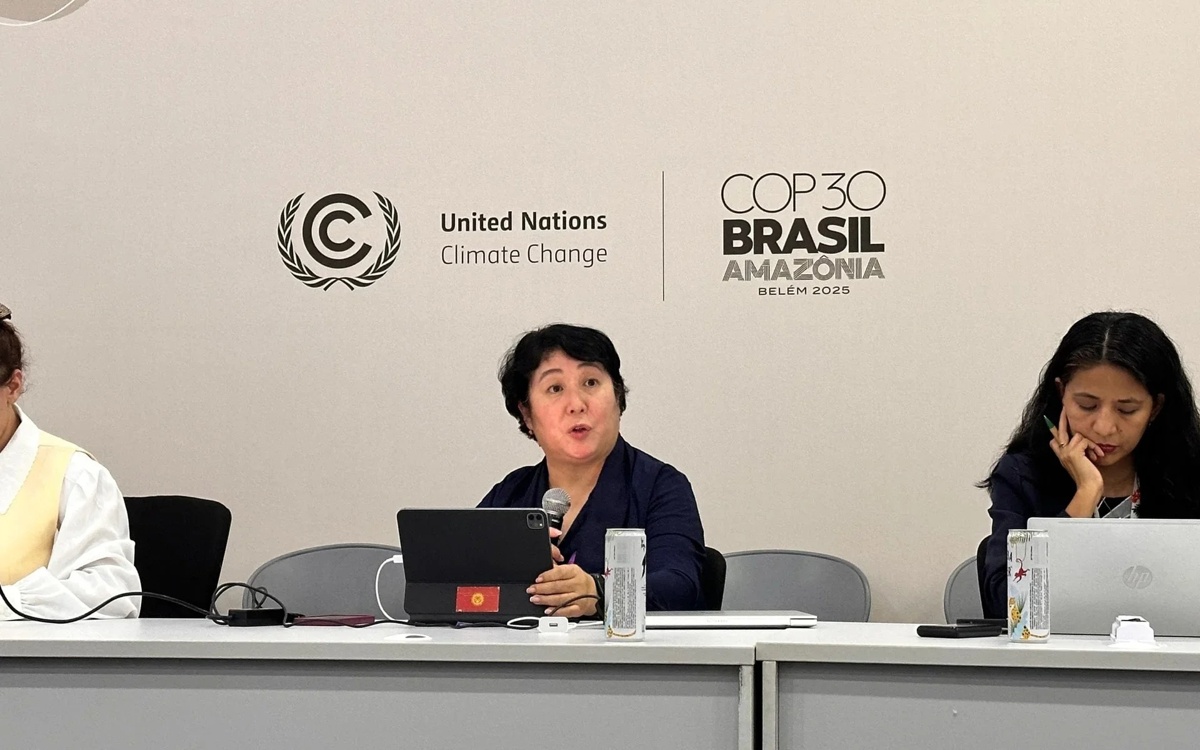Forest Loss and Uncertain Gains from Brazilian Mining – BIOENGINEER.ORG

Analysis of Mining Impacts on Deforestation and Sustainable Development in Brazil
Executive Summary
A recent study investigates the environmental and economic consequences of industrial and artisanal (garimpo) mining in Brazil, revealing a significant conflict with multiple Sustainable Development Goals (SDGs). The research quantifies extensive forest loss directly attributable to mining activities, which undermines SDG 15 (Life on Land). Furthermore, the economic benefits are often inconsistent and inequitably distributed, challenging progress toward SDG 1 (No Poverty) and SDG 8 (Decent Work and Economic Growth). The findings highlight the urgent need for integrated policy frameworks that align natural resource extraction with long-term sustainability targets.
Environmental and Socioeconomic Impacts in Relation to SDGs
SDG 15: Life on Land
The primary impact identified is extensive deforestation, which directly contravenes the objectives of SDG 15. Both forms of mining contribute to this degradation.
- Industrial Mining: Characterized by large-scale operations that result in significant, though often localized, forest clearing for infrastructure and extraction sites.
- Garimpo Mining: An artisanal and frequently informal practice that causes widespread and unregulated ecological disruption, leading to severe ecosystem fragmentation.
- Synergistic Effects: Mining-induced deforestation is compounded by other pressures such as agricultural expansion and logging, accelerating the loss of biodiversity and compromising critical carbon sequestration services provided by the Amazon.
SDG 8 (Decent Work and Economic Growth) & SDG 1 (No Poverty)
The study reveals a stark asymmetry between the environmental costs and the economic benefits of mining, questioning its role as a sustainable driver of economic growth.
- Industrial Mining: Tends to generate more measurable economic benefits through formal employment, tax revenues, and infrastructure investment, contributing moderately to local economies.
- Garimpo Mining: Yields inconsistent and ephemeral economic returns. It often fails to lift communities out of poverty, instead perpetuating cycles of economic vulnerability and environmental degradation, thus failing to support SDG 1.
- Unsustainable Growth Models: The reliance on mining, particularly its boom-bust cycles, undermines the creation of resilient local economies and decent work, challenging the principles of sustainable economic growth outlined in SDG 8.
SDG 3 (Good Health and Well-being) & SDG 6 (Clean Water and Sanitation)
The ecological consequences of mining extend beyond deforestation, posing direct threats to human and environmental health.
- Water and Soil Contamination: The release of heavy metals and toxic substances, common in mineral extraction, pollutes soil and water systems.
- Health Risks: This contamination jeopardizes the health of local and indigenous communities who depend on these natural resources, directly conflicting with the aims of SDG 3 and SDG 6.
Governance, Institutional Failures, and SDG 16
Weak Governance and Enforcement
The report underscores that weak institutional frameworks are a key enabler of destructive mining practices, particularly in marginalized regions. This directly impedes progress on SDG 16 (Peace, Justice and Strong Institutions).
- Municipalities with high levels of garimpo activity often suffer from weak governance, which hampers the enforcement of environmental regulations.
- The lack of strong institutions makes it difficult to mitigate illegal operations and hold actors accountable for environmental damage.
Policy Recommendations for Sustainable Development
Aligning Mining Practices with Global Goals
The study advocates for a multi-faceted policy approach to mitigate the negative impacts of mining and better align the sector with the SDGs.
- Strengthen Governance and Regulation (SDG 16): Enhance local institutional capacity to monitor and enforce environmental laws, ensuring mining operations comply with stringent standards.
- Formalize Artisanal Mining (SDG 8): Develop pathways to formalize and regulate garimpo activities to improve labor conditions, ensure fair economic returns through taxation, and reduce environmental harm.
- Promote Alternative Livelihoods (SDG 1, SDG 15): Foster economic diversification in conservation-aligned sectors to reduce community dependence on extractive industries.
- Enhance Cross-Sectoral Collaboration (SDG 17): Foster partnerships between government, the private sector, and civil society to create integrated land-use policies that balance economic needs with environmental protection.
- Leverage Technology for Monitoring: Utilize advanced satellite imagery and remote sensing to track deforestation in near-real-time, enabling rapid and targeted interventions.
SDGs Addressed in the Article
The article on forest loss and economic gains from mining in Brazil touches upon several Sustainable Development Goals (SDGs) by highlighting the complex relationship between economic activities, environmental protection, and social well-being.
-
SDG 15: Life on Land
This is the most prominent SDG in the article. The core subject is the “forest loss” and “ecosystem fragmentation” in Brazil, particularly the Amazon, due to mining. The text emphasizes the threat to “global biodiversity and carbon sequestration” and the need to “preserve one of the world’s most critical ecosystems.”
-
SDG 8: Decent Work and Economic Growth
The article extensively discusses the economic dimension of mining. It analyzes “economic gains,” “local GDP,” “formal employment generation,” and “tax revenues.” It contrasts the “measurable economic benefit” from industrial mining with the “inconsistent and often ephemeral economic returns” from garimpo mining, questioning the sustainability of mining-centric growth models.
-
SDG 1: No Poverty
The research finds that the promised economic benefits often fail to materialize, especially in communities reliant on garimpo mining. The article states that this discrepancy “perpetuates cycles of poverty and environmental degradation,” directly connecting the issue to the goal of eradicating poverty.
-
SDG 16: Peace, Justice and Strong Institutions
The article points to governance failures as a key issue, mentioning that affected regions often have “weak governance institutions” that hamper the enforcement of “environmental regulations.” It calls for “strengthening local governance” and highlights the challenge of mitigating “illegal or informal mining operations.”
-
SDG 12: Responsible Consumption and Production
The article notes that mining activities have intensified to meet “local and international demands for vital minerals.” This implicitly addresses the need for sustainable management and efficient use of natural resources, which is a core component of SDG 12.
-
SDG 6: Clean Water and Sanitation
The article discusses the broader ecological consequences of mining, including the “contamination of soil and water systems through the release of heavy metals and toxic substances.” This directly relates to the goal of ensuring clean water and sanitation, as such pollution poses severe risks.
-
SDG 17: Partnerships for the Goals
The policy implications section explicitly advocates for “cross-sectoral collaboration involving governmental agencies, civil society, and the private sector.” This call for integrated policy frameworks and partnerships aligns perfectly with the spirit and objectives of SDG 17.
Specific Targets Identified
Based on the article’s content, several specific SDG targets can be identified as directly relevant to the issues discussed.
-
Target 15.2:
“By 2020, promote the implementation of sustainable management of all types of forests, halt deforestation, restore degraded forests and substantially increase afforestation and reforestation globally.” The entire study is centered on quantifying and understanding “forest loss” and “deforestation” caused by mining, making this target central to the discussion.
-
Target 15.5:
“Take urgent and significant action to reduce the degradation of natural habitats, halt the loss of biodiversity and, by 2020, protect and prevent the extinction of threatened species.” The article mentions that mining activities threaten “global biodiversity” and lead to “ecosystem fragmentation,” which directly corresponds to this target.
-
Target 8.1:
“Sustain per capita economic growth in accordance with national circumstances and, in particular, at least 7 per cent gross domestic product growth per annum in the least developed countries.” The study analyzes the impact of mining on “local GDP” and questions the long-term viability of “mining-centric growth models,” especially when they result in “inconsistent income distribution” and “economic volatility.”
-
Target 8.3:
“Promote development-oriented policies that support productive activities, decent job creation, entrepreneurship, creativity and innovation, and encourage the formalization and growth of micro-, small- and medium-sized enterprises, including through access to financial services.” The article’s recommendation to encourage “formalization and regulation of garimpo activities” to improve labor conditions and economic returns directly supports this target.
-
Target 16.6:
“Develop effective, accountable and transparent institutions at all levels.” The article identifies “weak governance institutions” and the inability to “enforce environmental regulations” as key problems, calling for stronger local governance to manage mining impacts.
-
Target 12.2:
“By 2030, achieve the sustainable management and efficient use of natural resources.” The research investigates the “environmental costs” of extracting minerals to meet global demand, highlighting the unsustainable nature of current mining practices in the region.
-
Target 17.17:
“Encourage and promote effective public, public-private and civil society partnerships, building on the experience and resourcing strategies of partnerships.” The article concludes by recommending “cross-sectoral collaboration” and “integrated policy frameworks” as essential for balancing economic and environmental goals.
Indicators for Measuring Progress
The article mentions or implies several indicators that can be used to measure progress towards the identified targets.
-
Indicators for SDG 15 (Life on Land):
- Rate of deforestation: The study’s primary method involves using “satellite imagery” and “remote sensing technology” to “map deforestation trends” and “quantify forest loss.” This provides a direct, measurable indicator. (Relates to Target 15.2)
- Area of forest cover: The use of “high-resolution imagery” to track “land cover changes” is explicitly mentioned as a tool for monitoring. (Relates to Target 15.2)
-
Indicators for SDG 8 (Decent Work and Economic Growth):
- Change in Gross Domestic Product (GDP): The research analyzes “shifts in local GDP related to mining sectors” by cross-referencing satellite data with “municipal economic data.” (Relates to Target 8.1)
- Employment generation: The article distinguishes between industrial mining’s “formal employment generation” and the informal nature of garimpo mining, implying that formal job numbers are a key indicator. (Relates to Target 8.3)
- Tax revenues: Mentioned as a measurable economic benefit generated by industrial mining operations. (Relates to Target 8.1)
-
Indicators for SDG 6 (Clean Water and Sanitation):
- Water and soil quality measurements: The article discusses the “contamination of soil and water systems” by “heavy metals and toxic substances.” This implies that progress could be measured by monitoring the concentration of these pollutants in the environment. (Relates to Target 6.3)
-
Indicators for SDG 16 (Peace, Justice and Strong Institutions):
- Effectiveness of environmental regulation enforcement: While not quantified, the article’s focus on the inability to “enforce environmental regulations” due to “weak governance” implies that the number of enforced regulations or compliance rates would be a relevant indicator. (Relates to Target 16.6)
Summary Table of SDGs, Targets, and Indicators
| SDGs | Targets | Indicators Mentioned or Implied in the Article |
|---|---|---|
| SDG 15: Life on Land |
15.2: Halt deforestation and promote sustainable forest management.
15.5: Reduce degradation of natural habitats and halt biodiversity loss. |
– Rate of forest loss (quantified via satellite imagery). – Changes in land cover and ecosystem fragmentation. |
| SDG 8: Decent Work and Economic Growth |
8.1: Sustain per capita economic growth.
8.3: Promote formalization of enterprises. |
– Shifts in local GDP. – Formal employment generation numbers. – Tax revenues from mining operations. – Rate of formalization of garimpo mining. |
| SDG 1: No Poverty | 1.2: Reduce poverty in all its dimensions. |
– Measures of sustainable economic welfare. – Income distribution consistency. |
| SDG 16: Peace, Justice and Strong Institutions | 16.6: Develop effective, accountable, and transparent institutions. |
– Strength of local governance institutions. – Rate of enforcement of environmental regulations. |
| SDG 12: Responsible Consumption and Production | 12.2: Achieve sustainable management and efficient use of natural resources. | – Environmental cost per unit of mineral extracted. |
| SDG 6: Clean Water and Sanitation | 6.3: Improve water quality by reducing pollution. | – Concentration levels of heavy metals and toxic substances in soil and water. |
| SDG 17: Partnerships for the Goals | 17.17: Encourage and promote effective partnerships. | – Number and effectiveness of cross-sectoral collaborations (government, civil society, private sector). |
Source: bioengineer.org

What is Your Reaction?
 Like
0
Like
0
 Dislike
0
Dislike
0
 Love
0
Love
0
 Funny
0
Funny
0
 Angry
0
Angry
0
 Sad
0
Sad
0
 Wow
0
Wow
0













































































